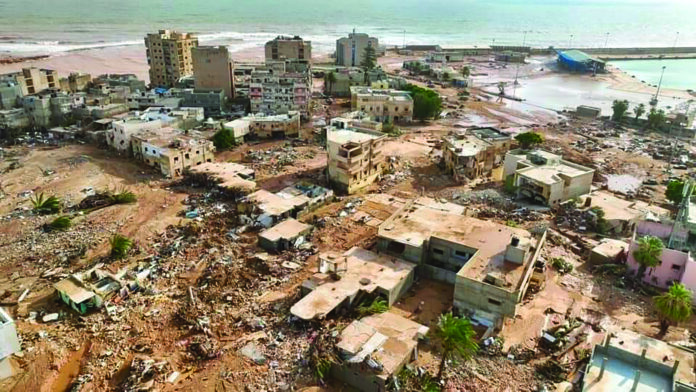
Within weeks after the catastrophe, 11,300 people were declared dead, 10,100 went missing and 38,640 displaced and the numbers continue to grow in Libya. As the days pass by, the country is still feeling the aftermath of the devastating floods from Storm Daniel that occurred around September 10, 2023. The floods demolished cities–such as Al-Bayda, Al-Marj, Tobruk, Takenis, Al-Bayada, and Battah–and destroyed vast amounts of infrastructure. These numbers are reported from Libya’s eastern coastal city of Derna alone. The true figures are likely much higher as there has been limited data collection due to access to certain areas. There is no doubt that the numbers will rise as search and rescue teams locate more people.
While many countries felt the impact of Storm Daniel, Libya was uniquely impacted as the floods wreaked havoc on the country. Compared to the impact of countries like Greece which resulted in the death of 16 people, or Italy which resulted in the death of 14 people, the two countries’ death tolls pale in comparison to Libya’s 11,300. But why was the flood so devastating in Libya and not to other countries?
According to the United Nations Office for the Coordination of Humanitarian Affairs (“OCHA”), one of the reasons why Libya was so negatively impacted was due to the infrastructure of two dams, the Jaza dam between Derna and Benghazi and the Qattara dam near Benghazi. These two dams were overwhelmed due to the rising waters caused by the Storm Daniel, a Mediterranean cyclone, flowing from the ocean. The cyclone dropped over 16 inches of rainfall and the sheer amount of rainfall is record breaking.The two dams were originally constructed in the 1970s and–according to some sources–have not been maintained since 2002. Dams have a limited lifespan and are much more susceptible to damage when they are not preserved.
A hydrology study of the Wadi Derna Basin was published last year detailing several notable deficiencies in the destroyed dams. The author of the study highlighted the current state of the dams and notated the fact that the dam was exposed to flood risks. In an unfortunate prognostication on the author’s part, he warned that the dam required immediate maintenance and attention lest a flood occur.
In 2021, a report was done by the United Nations Institute for Water, Environment and Health regarding dams that were over 50 years old. According to the report there are over 50,000 dams in the world and on average, many are older than 50 years old. Being reactive–rather than proactive– regarding the maintenance of dams is not something that is solely unique to Libya. However, the current floods place this issue in a spotlight and should create a desire in countries to fortify and maintain their dams.
Sauliha A. Matin





